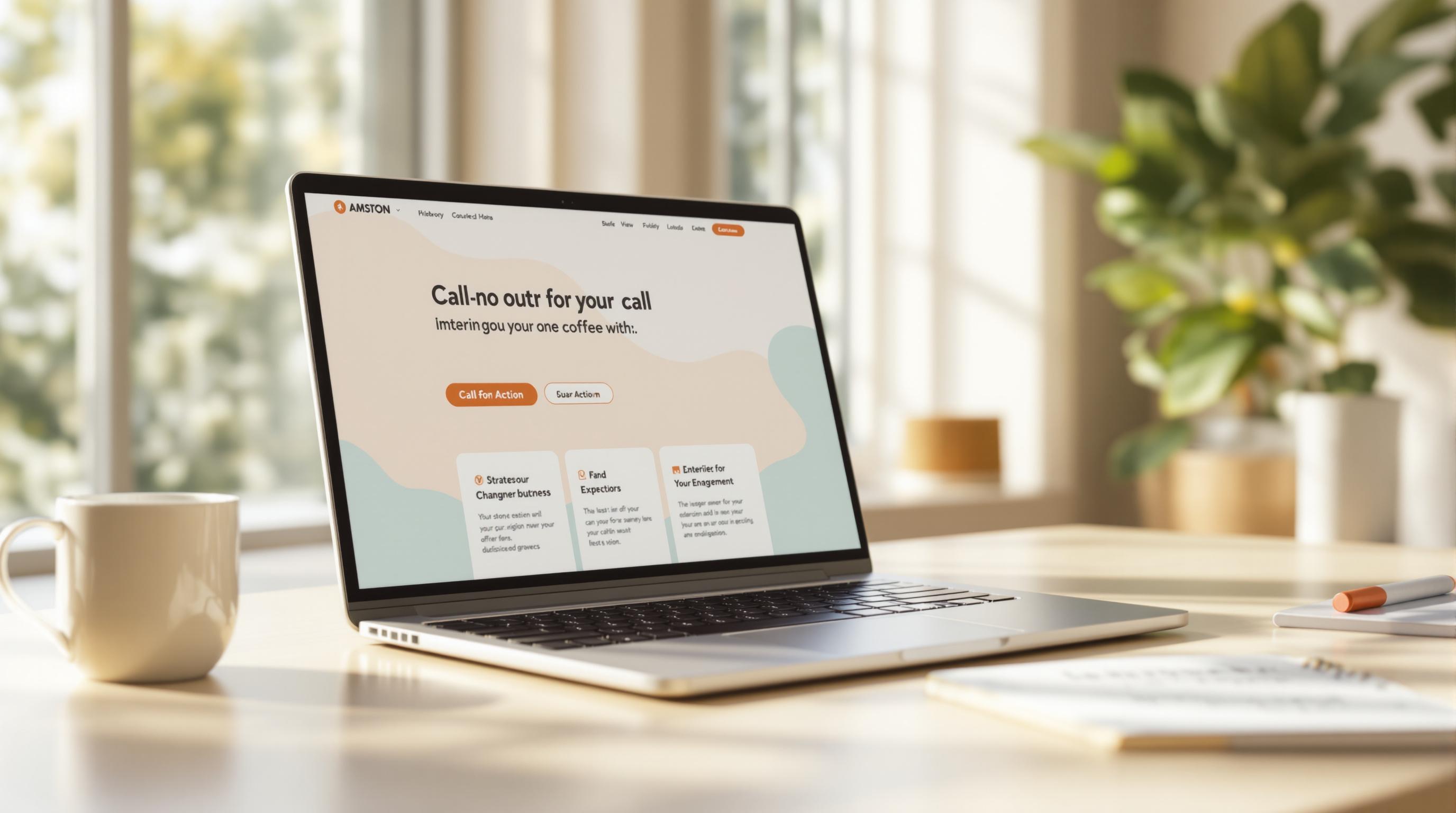Want to rank higher on Google? Understanding search intent is the key. Search intent is the "why" behind every search query - what users want when they type a keyword. It falls into four main types: Informational (learning something), Navigational (finding a specific site), Transactional (ready to buy), and Commercial Investigation (comparing options).
Here’s a quick breakdown of how to identify search intent in just 5 steps:
- Analyze Search Results (SERPs): Look at top-ranking pages, content types (articles, videos, product pages), and SERP features like snippets or shopping ads.
- Use Keyword Tools: Tools like SEMrush and Ahrefs categorize search intent and highlight key metrics.
- Match Content to Intent: Create guides for informational queries, reviews for commercial intent, and product pages for transactional searches.
- Track User Behavior: Monitor bounce rates, click-through rates (CTR), and time on page to see if your content aligns with intent.
- Update Regularly: Search intent changes. Use analytics to tweak your content and stay relevant.
Quick Tip: Keywords like “how” signal informational intent, while “buy” indicates transactional. Use tools and SERP analysis to confirm.
How to Analyze Searcher Intent - The 3C Formula
Step 1: Check Search Results Pages
Dig into search results pages (SERPs) to understand search intent. They show which keywords search engines prioritize and what users are looking to achieve.
Study Top-Ranking Pages
When analyzing top-ranking pages, pay attention to these key elements:
- Title Patterns: Look for common phrases, like titles starting with "How to", which suggest informational intent.
- Content Format: Check if the results are articles, guides, videos, or something else.
- Meta Descriptions: Notice how they address user questions or needs directly.
For instance, searching for "intermittent fasting" often returns articles and guides, pointing to informational intent. These observations help you identify larger trends across similar searches.
Find SERP Patterns
SERP features can give clear clues about user intent. Here's a quick breakdown:
| SERP Feature | What It Signals | Example of Intent |
|---|---|---|
| Featured Snippets | Users want quick answers | Informational |
| Knowledge Panels | Basic facts are needed | Informational |
| Shopping Results | Interest in purchasing | Transactional |
| Local Pack | Location-focused searches | Navigational |
Keyword modifiers are another helpful tool for spotting intent. Words like "how" or "what" often show informational intent, while "best" might indicate someone is researching options. Phrases like "near me" usually suggest navigational searches.
Tools like SEMrush's Keyword Overview can help speed up this process by categorizing intent automatically. However, always double-check manually since trends can shift over time.
Step 2: Pick the Right Research Tools
To understand search intent effectively, you need tools that dig deeper than basic metrics and offer insights through advanced analytics.
Top Tools for Intent Research
Different keyword research tools excel in various aspects of intent analysis. Here's a quick comparison:
| Tool | Key Features | Ideal For |
|---|---|---|
| SEMrush | Intent widget, SERP analysis, keyword metrics | Categorizing intent quickly |
| Ahrefs | Detailed keyword data, SERP position tracking | In-depth keyword analysis |
| Moz Keyword Explorer | Intent filters, SERP feature analysis | Spotting search patterns |
| Clearscope | Auto-suggest analysis, intent-based suggestions | Optimizing content effectively |
For example, SEMrush's Keyword Overview feature helps you categorize searches by intent, making it easier to align your strategy.
Once you've chosen your tools, the next step is understanding how to interpret the data they provide.
How to Analyze Keyword Data
After selecting your tools, focus on the keyword data to uncover user intent. Here's what to look for:
- Intent Indicators: Pay attention to specific words or phrases. For instance, terms like "how" or "what" suggest users are looking for information, while words like "buy" or "price" point toward transactional intent.
- SERP Features: Some tools highlight features like featured snippets or shopping ads, which can give clues about the type of content users expect.
- Search Volume and Competition: Think beyond just numbers. High-volume informational keywords may need a different strategy compared to lower-volume, high-intent transactional ones.
It's also a good idea to combine data from multiple tools to confirm intent signals and refine your targeting. Keep an eye on these metrics regularly - search intent can change, and staying updated ensures your content remains relevant.
Step 3: Match Content Types to Intent
To create content that aligns with search intent, you need to understand which formats work best for different user needs. Each type of intent calls for a specific content approach to address what users are searching for.
Content Types by Intent
Here’s how different content types can align with specific search intents:
| Intent Type | Best Content Formats | Key Elements to Include |
|---|---|---|
| Informational | Blog posts, guides, FAQs | Clear explanations, step-by-step instructions, visuals |
| Commercial | Reviews, comparison articles | Product features, pricing, pros/cons |
| Transactional | Product pages, pricing pages | Calls-to-action, purchase options, shipping details |
| Navigational | Landing pages, contact pages | Brand info, location details |
For example, if someone searches for "how to start a paleo diet", they’re looking for informational content. A detailed guide with basics, food lists, and meal planning tips would be the perfect fit.
Creating Intent-Based Content
To craft content that matches intent:
- Study SERP Features: Look at search results to understand which formats dominate for your target query.
-
Spot Keyword Modifiers: Keywords often signal intent. For example:
- “How” and “What” suggest users want guides or tutorials.
- “Best” and “Top” imply comparison or review content.
- “Buy” and “Price” point to transactional pages.
- “Near me” indicates location-based needs.
- Match the Depth: Tailor the level of detail to the query. A broad term like "paleo diet" needs in-depth coverage, while "buy paleo cookbook" should focus on product details and purchasing options.
When refreshing old content, use tools like SEMrush to analyze keyword intent and find areas to improve your strategy. This ensures your content stays relevant and aligned with user needs.
sbb-itb-d7fe25c
Step 4: Study User Behavior
Understanding how users interact with your content helps you align it with what they’re looking for.
Key Metrics to Watch
Here are three important signals that show if your content matches user intent:
| Metric | What It Tells You | What to Do |
|---|---|---|
| Bounce Rate | A high rate means users leave quickly - your content might not match their needs. | Adjust your content to better align with search intent. |
| Click-Through Rate (CTR) | A strong CTR shows your content matches what users are searching for. | Keep refining and optimizing your approach. |
| Time on Page | Longer time spent means your content is engaging and helpful. | Build on the elements that are working well. |
Take a closer look at behavior patterns for different keywords. For instance, if users spend more time on your how-to guides than product pages, it could mean they’re looking for information, not ready to buy. Use analytics tools to confirm these trends.
Tools for Behavior Analysis
Here’s how you can dig deeper into user behavior:
Google Analytics is a must-have for tracking engagement metrics like:
- Page views and session duration
- User flow across your site
- Exit pages and bounce rates
- Device and location data
Heatmap Tools give a visual breakdown of user actions:
- Click patterns show which areas of the page draw attention.
- Scroll depth reveals how far users go before they stop reading.
- Mouse tracking highlights what grabs their interest.
For example, if your product comparison page keeps losing traffic to your how-to guides, it might mean your audience is still researching and not ready to make a decision.
"Experts emphasize the importance of continuous monitoring and adjustment. For example, Neil Patel suggests regularly reviewing Google Analytics to identify trends and make data-driven decisions."
Step 5: Track and Update
User intent isn't static - it changes over time. Keeping an eye on your content's performance ensures it stays relevant.
Measure Results
Use tools like Google Analytics and SEMrush to track key metrics such as click-through rates, engagement levels, and conversions. These numbers help you understand if your content is hitting the mark with your audience.
Update Your Approach
Once you've analyzed the data, tweak your content accordingly. Here's how:
- Watch for changes in SERP features. For example, if featured snippets are becoming more common, it might mean users are looking for quick, direct answers.
- Regularly review and improve pages that aren’t performing well to better align with shifting user intent.
- Stay aware of seasonal or contextual changes. A keyword might attract informational searches at one time and transactional searches at another.
- For keywords that serve multiple intents, consider creating distinct content pieces tailored to each intent.
Leverage advanced tools to spot shifts in keyword trends and adjust your strategy effectively.
SEO Tools and Services
The right tools and expert advice can sharpen your search intent strategy. BrightSide SEO is a great example of a service that helps refine keyword intent strategies effectively.
BrightSide SEO Offerings

Combining professional services with consistent analytics ensures your content matches user intent. BrightSide SEO provides advanced keyword research that digs deeper than surface-level metrics. Their services include:
- Detailed SERP Analysis: Examining search results to uncover user intent trends.
- Competitor Insights: Analyzing how competitors target specific search intents.
- Schema Implementation: Adding structured data markup for better search engine understanding.
- Performance Monitoring: Keeping track of how well your content aligns with search intent.
| Service Level | Keywords Tracked | Content Creation | Support Type |
|---|---|---|---|
| Starter Plan | 10 keywords | 5 blog posts | Basic reporting |
| Growth Plan | 20 keywords | 10 blog posts | Regular consultation |
| Premium Plan | 30 keywords | 15 blog posts | Premium Slack support |
BrightSide SEO Services

BrightSide SEO blends technical know-how with practical solutions to refine search intent strategies. Their services include:
Keyword Intent Analysis
- Comprehensive research to identify primary and secondary search intents.
- Adapting to changes in search behavior over time.
- Custom reports that highlight performance metrics tied to search intent.
Content Optimization
- Creating strategic, optimized content with proper schema markup.
- Using schema to enhance how search engines interpret your content.
For businesses aiming to improve their SEO approach, BrightSide SEO offers packages that focus on on-page optimization and continuous performance tracking. Their all-in-one strategy helps businesses align their content with user search intent while maintaining strong technical SEO practices.
Conclusion: Using Search Intent for Better SEO
Search intent analysis helps you align your content with what users are looking for and what search engines prioritize. Here's how you can make it work:
Start by analyzing SERP patterns and using keyword research tools to uncover the intent behind search terms. Then, tailor your content format to match that intent. For example, create detailed guides for informational searches, and design product pages with clear calls-to-action for transactional queries.
Keep an eye on your results. Track rankings, organic traffic, and engagement to see how well your strategy is working. Stay flexible - monitor SERP changes and keyword modifiers like "how" for informational searches or "buy" for transactional ones - and adjust your approach as needed. This ongoing process ensures your content stays relevant and effective.
FAQs
How do you determine the search intent of a keyword?
Figuring out the search intent behind a keyword can be done in two simple steps:
- Check the top 10 search results: Look for patterns in the type of content that appears. For instance, searching "intermittent fasting" often brings up detailed guides and articles, which suggests an informational intent. This gives you a clear starting point.
- Use keyword research tools: Tools like Clearscope's Keyword Discovery can make this process easier. Their "Intent" widget automatically categorizes search intent, and SERP previews at the bottom of the analysis help you confirm your findings.
Quick Reference: Common Keyword Modifiers
| Modifier Type | Examples | Intent |
|---|---|---|
| Informational | how, what, why | Learning and understanding |
| Commercial | best, top, review | Researching products |
| Transactional | buy, price, discount | Ready to purchase |
| Navigational | near me, location | Finding specific places |
These steps and tools work together to help you decode search intent effectively.
"Understanding search intent can improve SEO strategies by ensuring that content meets user needs and expectations, leading to better rankings and engagement. It helps in creating content that speaks directly to what users want, reducing bounce rates and improving brand reputation."


